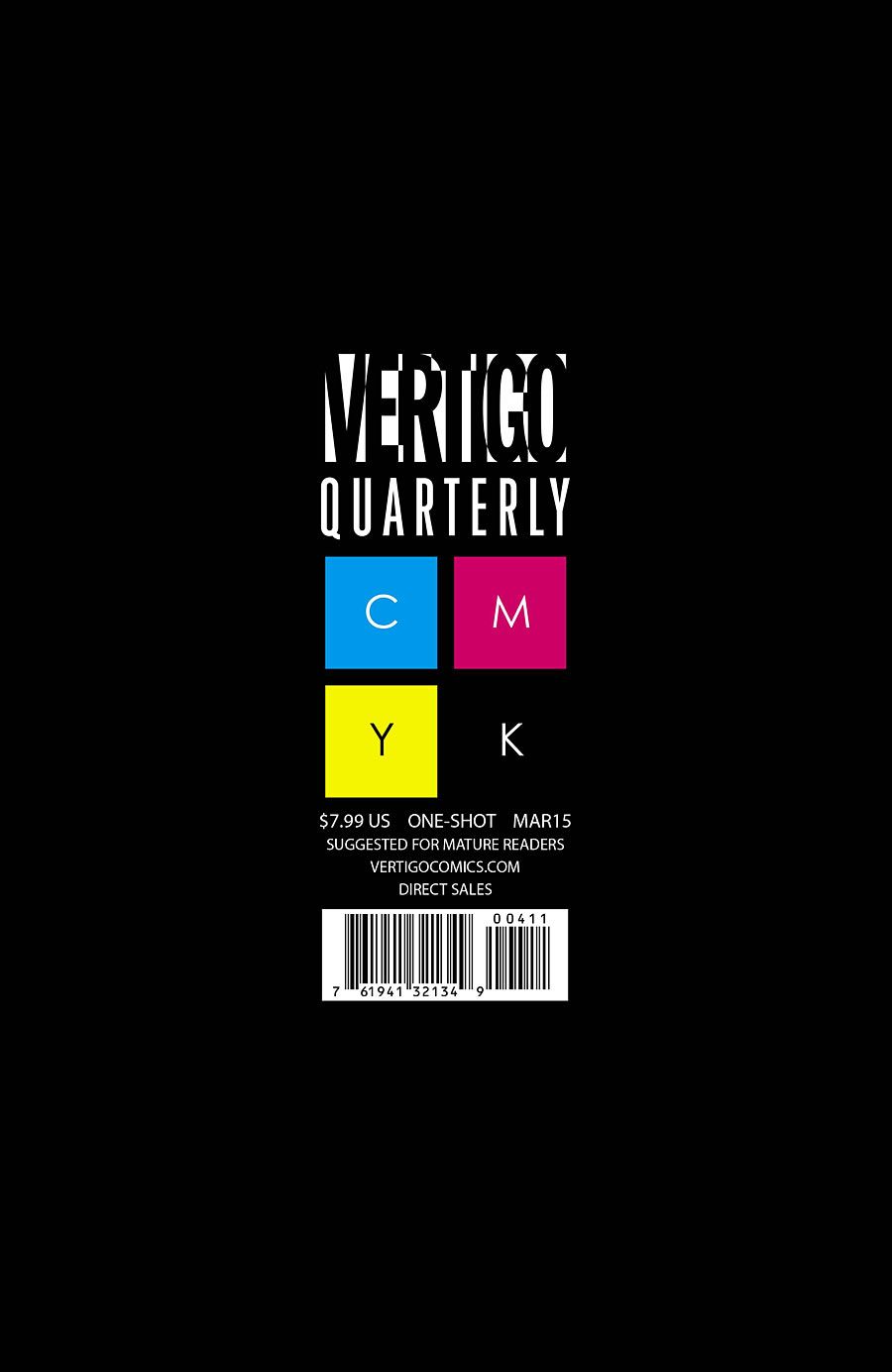"Vertigo Quarterly: Black" rounds out the first year of the Vertigo color-model-themed anthology series. True to Western associations with the color, all nine stories involve death or evil, but the strongest contributions have other themes as well.
"The Dying of the Light" by Francesco Francavilla is a horror story in which light is life and darkness, death. Francavilla's art page and panel composition and color are eye-catching and elegant, but the ending fails in its dramatic goals because Francavilla leaves readers in the dark about why the light dies.
"Super Blackout" by Gene Luen Yang and Sonny Liew has a sentimental but unusual approach to the theme of death with the creation of the blackout game app. The game's inclusion in the story climax feels artificial. The moral of the story is to make the life you want, and the game doesn't make that obvious insight any fresher. However, Yang's dialogue makes the characters appealing and Liew's attention to background detail makes the happy ending hard to resist.
"Sweet Tooth: Black" by Jeff Lemire is an emotionally charged vignette. It's not a vital add-on for readers who follow the original series, but it's not a disappointment either. Lemire creates a coming of age arc within only eight pages. Gus questions his father when he faces a classic but terrible moral dilemma of self-preservation versus compassion, security versus risk. Lemire's night sky against pine trees, assisted by Villarrubia's colors, evokes the wistful, dark mood of the series perfectly as well. It's a great introduction to the character for new readers.
"Fade" by Steven T. Seagle and Teddy Kristiansen is less a story than a dreamy sequential meditation on the theme of "dust to dust."
Kristiansen's paintings are lovely, but the open-ended last panel is frustrating because it suggests a story without delivering.
"Night of the Black Stant" by David Baillie and Will Morris is a coming of age story, built around an initiation rite in a matriarchal culture. The revelation of the true nature of the Black Stant is an excellent surprise in the tradition of classic science fiction. However, the story tries too hard for moral clarity. Chilka is a heroine for her courage and prowess, but her choice at the end of the story is not as obviously admirable. Morris and Baillie's world building is skillful but, in characterization, Morris takes some shortcuts. The Ikaru are too ignorant and the Black Stant are too simplistically evil. The lack of subtlety damages what is otherwise a fascinating, anthropological story that dips into gender politics and division of power.
"American Gothic" by Mary HK Choi and Ana Galvañ is an amusing play on the name of the painting by Grant Wood. A family in which the parents as well as the children are emo goths is a fun idea. Aurora's actions are a clever inversion of the usual adolescent rebellion. Galvañ's art colors contribute to a retro, psychedelic tone. The result is a superficial but successfully comic piece.
"Black Death in America" by Tom King and John Paul Leon is the only story to use black to refer to skin color, although evil and death also make their way into the story about Henry Lincoln Johnson, a distinguished soldier in WWI. King and Leon show the veteran being hailed as "Black Death" upon his return, as if he were a rock star. The title of the story has a double meaning, and the plague infecting the land is racism. King's exposition is concise and mixes many voices and settings without confusing the reader. Leon's artwork has great shading and transitions. They make their point about injustice without spelling things out for the reader, and the resulting biographical portrait of Johnson is superb storytelling. "Vertigo Quarterly: Black" is worth picking up for "Black Death in America" alone. It's a gem.
"Black Heaven" by Si Spencer and Nimit Malavia imagines a custom in which lovers go up a tor on "BlackHeaven Day" to determine whether their love is true or false. It's a fantastic idea, but not well-executed. Malavia's art has the lovers going two by two up the slope, naked. It works as visual metaphor, but both the nakedness and the quasi-Native American paint on the characters don't add up to anything. They exoticize the setting and appearances without providing context or depth. Spencer's rhyming lines at the end feel contrived rather than profound.
"Farewell" by Fabio Moon traces the same characters from earlier "Vertigo CMYK anthology" stories. The message is simple: while change feels like death, every end is a new beginning. Moon's great artwork makes the cliche feel fresh again, especially with the closing image of a bridge between the old life and the new one.
"Vertigo: Black" #1 has the usual ratio of hits and misses, but the standout stories are worth the price of the comic. The CMYK anthology is a great addition to Vertigo's line, producing better results than their holiday-themed collections. The color themes are like fixed forms for verse. The less successful stories are boxed in by trying to color inside the lines, while the better stories transcend the limitations.

